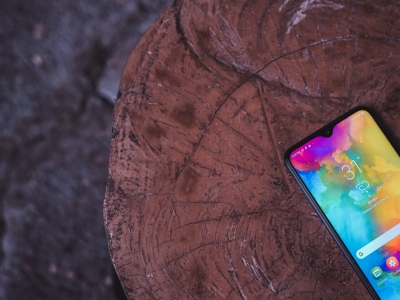
Wherever we go, we see a smartphone, they are simply everywhere, even so these portable devices are still far from ubiquitous. A report at the end of 2010 said that less than a third of mobile phone users have smartphones. This means about 70 percent of them still use “not-so-smart” phones. Right now, Internet access through smart phones is perhaps at the same level with access through desktop computer in 1996-1997. These devices will get better and may likely become a dominant portable online device in five years. If you know a little about smartphones, the buying process can be somewhat confusing. Four major carriers in U.S. offer scores of models that use different OSs. To get started immediately, you should gather important basic and shopping information to allow you make an informed buying decision.
Device
The same basic tip for buying a portable device still apply, you need to use the phone before deciding to buy it, even if you are completely familiar with the operating system. You can use phone review sites to choose a few phones that attract your attention and fit your requirements. Go to the store and spend time working with those models, it would be better if you have a friend with a phone that you like, to see how the phone is actually being used by a real consumer. Don’t buy online, if you never touch the phone yourself. It is important, because some phones use virtual keyboard instead of a physical keyboard. Some physical keyboards slide out from beneath the handset and others sit directly below the display. Keyboards are important for proper interaction with your phone, so you should make sure that you have tested it thoroughly. There’s nothing worse than paying $500 for a smartphone and then discovering that you don’t like the keyboard.
Battery life is also one thing that you should consider. It is based on how many features you use, the display size and how the phone is configured. For example, phones with push email turned on will have shorter battery life than if you fetch the emails manually. You should also be aware that some phones don’t allow you to change the battery, like the iPhone-series.
Operating system
Four major smartphone OSs are Microsoft’s Windows Phone 7, RIM’s BlackBerry OS, Apple’s iOS and Google’s Android. They share one similarity – the ability to install third-party apps that extend the device’s capabilities far beyond the manufacturer specification.
Currently, Android and iOS are more commonly used in smartphones. Android 2.3 (or Gingerbread) is the latest version of Android OS and a slight refinement of Froyo (Android 2.2). However, Android 2.3 is currently only available on Google’s Nexus S. Because carriers and manufacturers must make an exhaustive compatibility test before releasing an upgrade, it would take a while for a new Android version to be available for most consumers. Unlike Android, iOS has a uniform updating process which means users can get latest updates in an easier and speedier manner. In 2010, Apple released five updates and users can get an update simply by connecting their devices to the Internet. RIM and Microsoft also impose controlled update for their OSs as well.
Some smartphone users are already satisfied with standard features offered by their phones. However, if you want a highly versatile phone that can do many things, you should also consider the available apps. iTunes App Store offers the highest number of apps, with 300,000 apps for Apple’s devices. Android Market currently offers more than 220,000 apps, BlackBerry App World has 15,000 apps and there are only 5,500 apps for Windows Phone 7 devices. Even so don’t let these numbers fool you, although you can literally install hundreds of thousands of iOS and Android apps, most of them don’t worth your time. Visit those application market sites and see which OS offers applications that you like.
Carrier
In most cases, choosing a carrier is a no brainer, you should choose a carrier that you’re already familiar with. But smartphones are of different entity, you can’t easily assume that what work with your current “not-so-smart” phone, will work similarly well with your new smartphone. There are a few different things you should consider when using a smartphone. Smartphone you get from a carrier also comes with a monthly data package other than the standard voice plan. Certain carriers offer an unlimited data plan for a monthly fee, some are based on time and others are based on data amount. To complicate things even further, a carrier may have tiers of service with different limitations. Choose a service that fit your requirements best.
If you don’t know anything about data plan, things can be difficult to figure out at first. Accessing web sites, social networks, pictures, audio and video can chew up so many data. If your daily requirement only revolves around browsing, email and social networking, a small to medium data package is usually enough. All carriers usually have voice connection at similar quality in most places, however good 3G connectivity may not always be available even in some urban areas. Check whether a carrier offers good 3G coverage in your neighborhood, office and other places you frequent most.
More 4G smartphones are going to be released in 2011, so it is a good idea to wait for awhile and choose a carrier that supports the new technology. T-Mobile, Verizon and Sprint all have launched 4G networks. AT&T is a little late and won’t release the service until later this year.










Comments